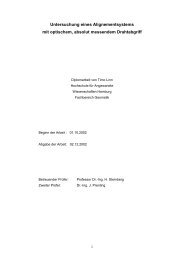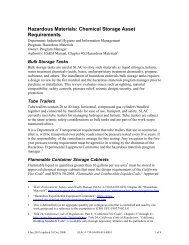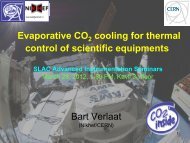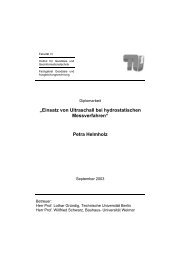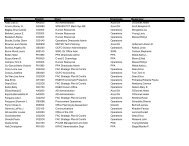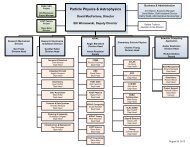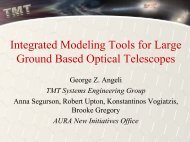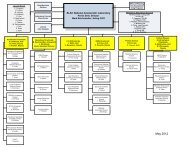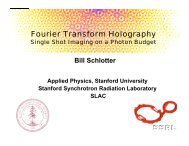BES - SLAC Group/Department Public Websites - Stanford University
BES - SLAC Group/Department Public Websites - Stanford University
BES - SLAC Group/Department Public Websites - Stanford University
You also want an ePaper? Increase the reach of your titles
YUMPU automatically turns print PDFs into web optimized ePapers that Google loves.
FYO7 <strong>SLAC</strong> S CIENCE AND T ECHNOLOGY S ELF E VALUATION<br />
Objective 1.2 Leadership in Science and Technology<br />
The US collaboration on High Gradient Research for future colliders was formed in 2006. The<br />
specific goal is to establish the best frequency and accelerator structure design for a future multi-TeV<br />
collider. The work plan assumes a period of 5 years. <strong>SLAC</strong> is the host of this collaboration and<br />
research activities include theoretical and experimental studies of the rf breakdown phenomenon.<br />
This work aims to establish a better understanding of the frequency scaling of the limiting gradient,<br />
as well as its dependence on material, surface preparation, structure design, pulsed heating, etc. It<br />
explores the high gradient barriers that result from choices made in current linear collider programs.<br />
The experimental effort entails test facility upgrades and the development of new high-power rf<br />
sources designed for high gradient testing. The goal is to produce and test at very high gradient an<br />
accelerator structure suitable for use in a multi-TeV two-beam linear collider.<br />
<strong>SLAC</strong> experimental facilities are made available to collaborators for experiments supported within<br />
the collaboration.<br />
The problems and potential solutions for high accelerating gradient include the following.<br />
Frequency scaling<br />
CERN and <strong>SLAC</strong> experiments have shown less frequency dependence than expected;<br />
however, frequency links other parameters such as pulse length, filling time, power,<br />
energy, and geometry.<br />
Geometry dependence<br />
There is a clear geometry dependence; e.g., accelerator structures with different a/λ,<br />
and circuit dependence; e.g., standing wave vs. traveling wave; the origin of this<br />
dependence is not clear.<br />
Energy, power and pulse length<br />
There is clear pulse length dependence; however, the laws that govern it are debatable<br />
and differ from one experimental setup to another.<br />
Materials<br />
Very little is known about materials and DC voltage data does not seem to apply.<br />
There may be opportunities for significant development here.<br />
Surface processing technique (etching, baking, etc.)<br />
There are known practices that have been proven to help; however, the basic physics is<br />
still under debate, and the question of processing vs. initial condition of the surface is<br />
in question.<br />
Theory<br />
There is no robust theory to date, although several attempts at particle tracking, scaling<br />
with surface physics, and surface atom dynamics have been put forward.<br />
Wake field damping<br />
At the moment several ideas are being explored fro strong wake field damping. This is<br />
important because it allows shortening the pulse length for the same train of bunches,<br />
hence enable higher gradient. At the moment the most advanced technique was the one<br />
developed for the NLC with moderate damping.<br />
Accelerator Structure Research Program for the ILC<br />
Accelerator structures for the ILC positron source<br />
An improved alternative design for the L-Band normal conducting accelerating system for both the<br />
ILC positron source and electron source is being developed. Results appear in the ILC RDR.<br />
Due to the extremely high energy deposition from positrons, electrons, photons and neutrons behind<br />
the positron target, normal conducting structures must be used up to an energy of 400 MeV. This<br />
normal-conducting section must sustain high accelerator gradients during millisecond-long pulses in<br />
a strong magnetic field, provide adequate cooling in spite of high rf and particle loss heating, and<br />
produce a high positron yield with the required emittance. The proposed design contains both<br />
F I N A L P A G E 4 3



